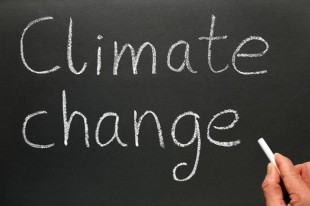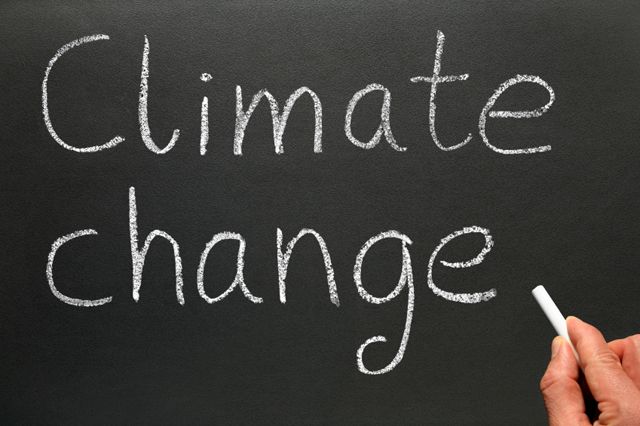 You keep hearing about the Waxman-Markey climate and energy bill — aka the American Clean Energy and Security Act, ACES, H.R. 2454 — but what’s actually in it? We combed through the 946-page beast so you don’t have to.
You keep hearing about the Waxman-Markey climate and energy bill — aka the American Clean Energy and Security Act, ACES, H.R. 2454 — but what’s actually in it? We combed through the 946-page beast so you don’t have to.
Here are the highlights of the bill, which is sponsored by Reps. Henry Waxman (D-Calif) and Ed Markey (D-Mass.) and was passed by the House Energy and Commerce Committee on May 21.
Renewable electricity standard
The bill creates a renewable electricity standard (RES) that would require large utilities in each state to produce an increasing percentage of their electricity from renewable sources. Qualifying renewable sources are wind, solar, geothermal, biomass, marine and hydrokinetic energy, biogas and biofuels derived exclusively from eligible biomass, landfill gas, wastewater-treatment gas, coal-mine methane, hydropower projects built after 1992, and some waste-to-energy projects.
The RES:
- Requires 6 percent of electricity to come from renewables by 2012
- Requires 20 percent of electricity to come from renewables by 2020
- Up to 5 percent can actually come from efficiency improvements
- If a state determines that its utilities cannot meet the target, the efficiency component can be increased to 8 percent and the renewable component decreased to 12 percent
Emission cuts
The bill would put a cap on emissions of planet-warming greenhouse gases, and would require high-emitting industries to reduce their output to specific targets between now and the middle of the century. (This is the “cap” part of the “cap-and-trade” program.) The bill covers 85 percent of the overall economy, including electricity producers, oil refineries, natural gas suppliers, and energy-intensive industries like iron, steel, cement, and paper manufacturers.
- Emission cuts would start in 2012
- The cap-and-trade program would be completely phased in by 2016
 Track the debate and take action >>>
Track the debate and take action >>>
The goals for U.S. emission reductions, below 2005 levels:
- 3 percent cut by 2012
- 17 percent cut by 2020
- 42 percent cut by 2030
- more than 80 percent cut by 2050
Emission permits
Regulated industries would need to acquire permits for their emissions. (Emission permits are also referred to as “carbon credits,” “pollution allowances,” and various combinations of these words.)
If a company cuts its emissions so much that it has more permits than it needs, it can sell excess permits to other companies or bank them for future use. If a company doesn’t have enough permits, it can buy more or borrow its future credits and pay interest on them. Non-regulated entities (banks, nonprofits, people like you) can also buy and sell permits. (This is the “trade” part of the “cap-and-trade” program.) If a company’s emissions exceed its permits, it would be fined two times the fair market value of the permits it should have purchased.
- About 85 percent of emission permits would be given away free at the start of the program, with the percentage decreasing over time
- About 15 percent of emission permits would be auctioned off at the start of the program, with the percentage increasing over time
- A permit to emit one ton of carbon dioxide or its equivalent would be worth about $11 to $15 (in 2005 dollars) in 2012, according to preliminary EPA estimates
- A permit would be worth about $22 to $28 (in 2005 dollars) in 2025, the EPA estimates
- The value of all permits would be about $60 billion in 2012
- The value of all permits would be roughly $113 billion in 2025
Some of the permits would be given away to industries regulated under this bill:
- 15 percent would be given to energy-intensive industries like iron, steel, cement, and paper until 2025
- 5 percent would be given to merchant coal generators (companies that sell coal-generated electricity to other companies at market prices) and to electricity producers obligated to supply electricity under long-term contracts; the giveaways would be phased out from 2026 through 2030
- 2 percent would be given to oil refineries starting in 2014 and ending in 2026
- 2 percent would be given to electric utilities between 2014 and 2017, and 5 percent thereafter, to cover the costs of deploying carbon capture and sequestration technology
Some of the permits would be given to entities that are not covered under the bill, which would sell them and use the proceeds for specific purposes:
- 30 percent would be given to local electricity distribution companies, with giveaways phased out from 2026 through 2030; the companies, which are generally regulated by states, would be required to use the proceeds to help keep consumer electricity prices low
- 10 percent would be given to state governments, which would be required to use the value to support renewable energy, energy efficiency, transportation planning, and transmission projects
- 9 percent would be given to local natural-gas distribution companies, with giveaways phased out from 2026 through 2030; the companies would be required to use the proceeds for energy-efficiency projects and to help keep consumer prices low
- 3 percent would be given to the automobile industry from 2012 and 2017, scaling back to 1 percent through 2025; the value would be used for the development of clean car technologies.
How permit auction revenue would be spent
About 15 percent of the pollution permits would be sold by the federal government in the initial years of the program. Here’s how the revenue would be spent (shown as a percentage of the value of all permits):
- 15 percent would be used to offset increased energy costs for low- and moderate-income households
- 5 percent would be used to prevent international deforestation, scaling back to 3 percent from 2026 to 2030 and 2 percent from 2031 to 2050
- 2 percent would be used to help the U.S. adapt to the negative effects of climate change from 2012 through 2021, scaling up to 4 percent from 2022 through 2026 and 8 percent thereafter; half would be spent on wildlife and natural resources and the other half on other adaptation concerns, like public health
- 1.5 percent would be used to support research and development of advanced clean-energy and energy-efficiency technologies
- 1 percent would go to help other nations adapt to climate change from 2012 through 2021, scaling up to 4 percent from 2027 to 2050
- 1 percent would go to international clean-technology deployment from 2012 to 2021, scaling up to 4 percent from 2027 to 2050
- 0.5 percent would be used to help U.S. workers transition away from fossil fuel-dependent industries from 2012 through 2021, scaling up to 1 percent from 2022 to 2050
Investments in energy technology
By 2025, the bill would direct an estimated total of $190 billion to energy technologies and efficiency measures:
- $90 billion to energy-efficiency and renewable-energy technologies
- $60 billion to carbon-capture-and-sequestration technology
- $20 billion to electric vehicles and other advanced automotive technologies
- $20 billion for basic scientific research and development
The bill also creates a Clean Energy Deployment Administration within the federal government that would provide loans and loan guarantees to spur more private investment in energy technology.
Offsets
Regulated companies would be allowed to purchase carbon offsets to meet a portion of their required emission reductions — meaning they could fund clean-energy projects elsewhere instead of cutting their own emissions. This could lower the cost of complying with the new law.
- Offsets could account for up to 2 billion tons of total emission reductions each year under the entire cap; According to some estimates, in 2012, that would mean that up to 15 percent of emissions cuts could be made with offsets, and by 2050 that figure would rise to 33 percent
- The EPA would determine eligible offset projects based on recommendations from an Offsets Integrity Advisory Board
- Half of permitted offsets would be domestic, half international
- However, if there are not enough offsets available on the U.S. market, then up to three-quarters could come from international sources
Coal-fired power plants
- New coal plants could be built between 2009 and 2020, though they would be expected to adopt carbon-capture-and-sequestration (CCS) technologies when they become commercially available
- By 2025, all coal plants built after 2009 would have to capture 50 percent of their CO2 emissions
- Coal plants built after 2020 would have to capture 65 percent of CO2
- Early movers on CCS would be rewarded — for every ton of CO2 it sequesters, an electric utility that gets at least half its power from coal would receive bonus emission permits for 10 years
- $1 billion would go toward CCS demonstration and deployment each year, funded by a fee on consumers of fossil-based electricity
Energy-efficiency standards
- The bill would set new energy-efficiency standards for lighting products, commercial furnaces, and other appliances
- New energy-efficiency standards for buildings would require 30 percent improvement by 2010 and 50 percent improvement by 2016
- New standards for industrial energy efficiency would be set
- Households could receive $3,000 in financial support to make their residences at least 20 percent more energy efficient
- Commercial buildings would also get financial support for weatherization
Worker transition
- The bill would increase funding for the Energy Worker Training Program, which was created as part of the 2007 energy bill
- Workers displaced due to new emission regulations would be entitled to 156 weeks of income supplement (70 percent of their average weekly wages), 80 percent of their monthly health-care premium, up to $1,500 for job-search assistance, and up to $1,500 for moving assistance
- Grants could be awarded to colleges and universities to develop programs of study that prepare students for careers in renewable energy and energy efficiency
Smarter cars and smarter grids
- The bill includes a “cash-for-clunkers” program that would provide roughly 1 million vouchers, ranging from $3,500 to $4,500 in value, to consumers who trade in older, less-fuel efficient vehicles for new vehicles that get better gas mileage
- The bill has a number of provisions to support electric vehicles and plug-in hybrids
- The bill has a number of provisions to help develop “smart grid” technologies and build better transmission infrastructure



